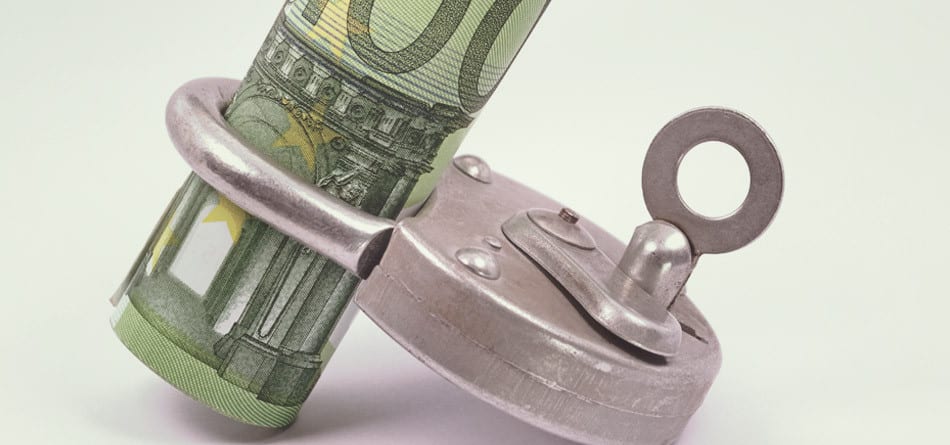

Digital asset derivatives exchange Bitnomial is launching a regulated clearinghouse in the US and Eurex Clearing, the derivatives arm of Deutsche Börse, plans to offer improved collateral mobility using distributed ledger technology (DLT) in the second quarter of this year.
On 16 January 2025 Bitnomial Exchange said in a statement that it will be launching a Commodity Futures Trading Commission (CFTC)-registered derivatives clearing organization and stablecoin clearinghouse on 30 January. The exchange said this will be only the fourth US clearinghouse to clear margined, physically-settled, and cash-settled derivatives contracts.
Michael Dunn, president of Bitnomial Exchange, told Markets Media: “The launch of our clearing house is absolutely pivotal in allowing this market to scale dramatically. This opens up a whole new era.”
Average daily volume in the global crypto derivatives market is $100bn according to Bitnomial, of which 95% has operated offshore. Since the exchange launched in 2021, Bitnomial has intended to have its own clearinghouse.
“We didn’t know how quickly we would need it,” Dunn added.”We have to own our entire stack from a technology and a risk perspective for what we are looking to do, which no one else does in the US.”
Owning a clearinghouse makes it easier for Bitnomial to launch new contracts and decreases the time to bring them to market.
Since launching the exchange, Bitnomial has been using MIAX Futures Exchange for clearing. Bitnomial has now applied for regulatory approval to launch the first US-based perpetual futures markets, called Botanical. Perpetual futures do not have an expiry date and allow traders to speculate on the underlying asset prices indefinitely, which would have been difficult to clear by traditional CCPs as they require hourly variation payments.
In another example, Bitnomial launched Hashrate futures in May 2024, which were the first bitcoin mining derivative product to trade on a regulated exchange. Bitnomial said contract activity has been limited by onerous margin requirements for industrial participants such as miners and lenders and Bitnomial Clearinghouse (BNCH) cuts margin rates by almost half while more accurately reflecting the risks.
Bitnomial Clearinghouse was built in-house and will not be operating 24/7 at launch. Initially, the new clearinghouse will accept US dollars as margin collateral but Bitnomial will be working with the CFTC to be able to accept other types of collateral, such as bitcoin its for bitcoin contracts and then ether for when it launches ether derivatives, and eventually, stablecoins.
Stablecoins have been used in digital finance to transfer value and liquidity 24/7/365 seamlessly around the globe, in contrast to a fiat currency such as the US dollar that is used in traditional banking. They are backed by collateral to maintain a stable price over time by pegging value to a reference asset such as a fiat currency or a commodity.
Dunn highlighted that in traditional derivatives markets, such as CME, traders can use a variety of collateral from their balance sheet including cash, US treasuries or gold.
“There is no reason why we couldn’t do this across the crypto complex if we understand the properties of the token or stablecoin,” he added.
The ability to use digital assets as collateral boosts capital efficiency and decreases the cost of trading crypto derivatives, as it removes the need to borrow fiat cash. Capital efficiency is then increased further when traders use a variety of crypto derivatives and have the ability to use portfolio margining.
“Until capital efficiency improves, I think the crypto derivatives industry will be stifled,” said Dunn.
Bitnomial Clearinghouse uses the conventional SPAN risk model to calculate margin requirements for derivatives and cash positions. SPAN is used by central counterparties (CCPs) in traditional finance and Dunn argued that it works well in crypto, and is also suitable for perpetual futures and stablecoins.
“The end game is that people should be able to put down any type of collateral to trade any product,” Dunn added. “The clearinghouse should have the correlations, the haircuts and the risk model to take that into account.”
Bitnomial Clearinghouse has the same structure as a CCP in traditional finance with a default fund to protect clearing members and a default waterfall which establishes the order of payments in the event of the failure of a clearing member.
“The structure of our clearinghouse house is very traditional, because we think the traditional model works for the most part,” Dunn said. “We just want to accept other types of collateral and hasten the variation margin.”
Luke Hoersten, chief executive of Bitnomial, said in a statement that the launch of the clearinghouse represents the culmination of the firm’s vision. As part of this transition, Bitnomial has been winding down trading of Bitnomial’s legacy-cleared products, physically settled bitcoin futures and options and Hashrate futures, and will be listing all new expiries on the new clearinghouse on 30 January 2025.
Hoersten said: “For the first time, we will provide a fully operational, end-to-end ecosystem that redefines how derivatives are traded, cleared, and settled within a U.S.-regulated framework, upgraded to digital asset infrastructure.”
Eurex Clearing paves the way for mobilizing digital collateral
Eurex Clearing said in a statement that the German regulator, BaFin, has not objected to DLT-supported collateral mobilization for its clients. The initiative is a collaboration with HQLAX, formed by a consortium of financial institutions to improve collateral mobility and Clearstream, Deutsche Börse’s central securities depository. J.P. Morgan is planning to participate as the pilot clearing member.
Eurex said: “The flexibility, speed and efficiency of collateral transfers will be enhanced by mobilizing collateral with the support of the HQLAX digital ledger.”
This will improve the immediate availability of collateral to meet the margin requirements set by CCPs.
Helen Gordon, global head of derivatives clearing at J.P. Morgan, said in a statement: “We look forward to the next phase of implementation and realizing the risk and optimization benefits associated with improved collateral mobility for us and our clients.”









